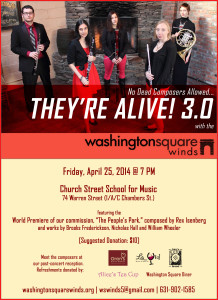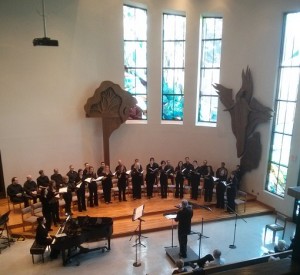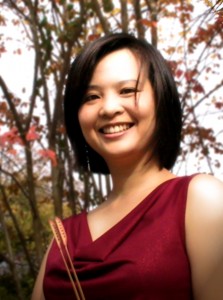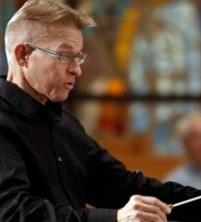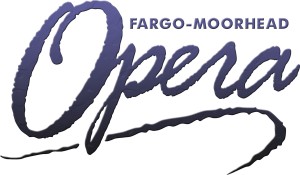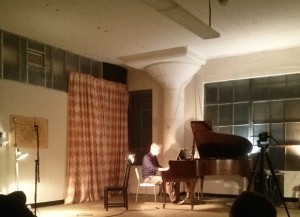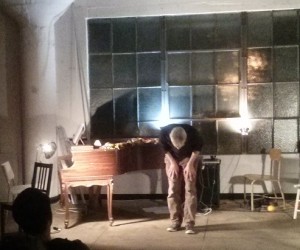On Friday, March 21, Distinguished Concerts International New York (DCINY) presented “a cappella NEXT,” in which three choirs performed a fascinating line-up of contemporary choral music in Weill Recital Hall at Carnegie Hall. Included were four world premieres, and many of the composers represented on the program were present in the sold-out audience, making for an evening vibrant with the vitality of new music.
First up was the University of California, Berkeley Chamber Chorus under the direction of Marika Kuzma. They opened with the short fanfare “Let everything that hath breath praise the Lord” from Requiem: a Dramatic Dialogue, composed by Randall Thompson on a commission from UC Berkeley in 1958. Hardly new by the standards of the rest of the evening’s fare, it was a reminder of the groundwork on which contemporary artists now stand and served as an entry point to a selection of more recent music by composers connected with UC Berkeley. The Chamber Chorus struggled with intonation and blend, possibly due to the acoustic of Weill Recital Hall, a space better suited to instrumental chamber music than vocal but one that produces an immediacy of sound that made for an intimate sonic experience. The sopranos sang with a pure—if somewhat young—timbre, and the altos shone in the excerpts from Jorge Liderman’s Sephardisms II with their clear, well-nourished tone. The largest of the three choirs performing, the UC Berkeley Chamber Chorus lacked some of the individual vocal strength of the other two ensembles but made full use of their size in the aleatoric passages of Robin Estrada’s “Awit sa Panginoon,” a fascinating blend of Filipino folk style singing with more modern tonal clusters, aleatory, and extended vocal techniques. The Chamber Chorus displayed some of their best singing in their final selection, “Vesna” from Pory Roku by Ukranian composer Lesia Dychko. Coming out of the bleakness of Richard Felciano’s “Winter” from The Seasons, the exuberance of Dychko’s piece was welcome contrast. While the performance felt at times a bit restrained, the Chamber Chorus delivered well-balanced singing, overcoming their previous struggles to find a cohesive ensemble sound.
Next to take the stage was NOTUS: Indiana University Contemporary Vocal Ensemble. Under Dominick DiOrio’s leadership, NOTUS stood out for the polish and dynamism of their performance. Though fewer in number than the UC Berkeley Chamber Chorus, NOTUS’s singers filled the hall with a more vibrant tone and achieved more secure intonation than either of the other choruses. Their set opened with two world premieres. The first, by Zachary Wadsworth, was a highly evocative setting of Wallace Stephens’s “To the Roaring Wind.” Beginning with voiceless breath evolving into tone, the piece unfolds with the text seemingly struggling to emerge from less organized sound—not unlike the idea behind Luciano Berio’s Visage, but a less tortured soundscape and one easier to follow. The piece has a directness—almost inevitability—to its linear development, but it is well paced in a way that makes its destination immensely rewarding. DiOrio and NOTUS did an excellent job of communicating the varied sounds, abortive sonorities, and moments of textual clarity, delivering an overall sophisticated performance of this fresh work.
The second premiere was of Aaron Travers’s setting of Walt Whitman’s “Virginia: The West.” Seizing upon the rapid shifts inherent in the text, Travers uses different styles spanning nearly a millennium to highlight each of the unique characters. The changes are as fast and thick as those in the poem, making for an eclectic montage bringing life to Whitman’s text.
Next on NOTUS’s program was the “Passacaglia” from Caroline Shaw’s Pulitzer Prize-winning Partita for 8 voices. Recently featured at the Grammy Awards in a performance by Roomful of Teeth, “Passacaglia” is an enthralling piece that makes use of a wide array of vocal techniques, often shifting abruptly from one style to another. As such, it presents singers with considerable vocal demands, which NOTUS negotiated skillfully. More challenges were to be had in Dominick DiOrio’s “O Virtus Sapientiae.” Described by the composer as “a bold reimagining of Hildegard’s chant,” it puts three soprano soloists to the test with fleet melismata, rhythmic displacement, and an expansive range. The soloists—Sandra Periord, Elise Marie Kennedy, and Martha Eason—imparted a convincing performance. Robert Vuichard’s “Zephyr Rounds” made for a rousing close to the set. The piece’s contrapuntal interest makes it much more than a simple crowd pleaser, but it was sheer fun, eliciting a well-deserved ovation for this exciting ensemble.
Last to perform were the Kansas-based Ad Astra Singers under the direction of John Paul Johnson. As the smallest ensemble of the evening, the Ad Astra Singers seemed to feel most keenly the lack of support from the hall’s acoustic. With voices that sounded unaccustomed to singing senza vibrato, they struggled through the premiere of Aleksander Sternfeld-Dunn’s Four Haikus. Sternfeld-Dunn sets the scant text pictorially, at times with broader brush strokes, at others with specific gestures like layered ostinati depicting the jumping of frogs in the second movement. Rather than four distinct paintings, each haiku becomes its own series of scenes.
Kansas City-based composer Jean Belmont Ford penned two songs on the program. Her music is characterized by a lush harmonic palette that is relatively accessible though not fettered by tonality. The first of her pieces performed here, “Draba” from Sand County, is a beautiful and pleasingly uncomplicated setting of a text about an overlooked desert flower. “Love Song”—the evening’s fourth and final premiere—was full of Ford’s typical harmonic twists and turns, evoking a variety of colors. The Ad Astra Singers negotiated most of these twists well, giving the piece a fair hearing. Wayne Oquin’s spacious “O Magnum Mysterium” wanted for a more stable sostenuto sound than the seventeen voices of the Ad Astra Singers could deliver in the acoustic of Weill, and some of its more interesting harmonies and soaring lines fell short in this performance. After the reverent “O Magnum Mysterium,” the rhythmic drive of Jósef Świder’s “Cantus Gloriosus” made for a sharp contrast to close the program. Though continuing to battle problems with ensemble and intonation, the Ad Astra Singers nevertheless delivered a spirited performance to wrap up an ambitious program for the small chorus.
In sum, the concert made for a delightful sampling of the vast array of new music available to adventurous choral ensembles. All three directors provided the audience with variety that kept the program consistently intriguing. They and their singers are to be commended for this undertaking, and many thanks are due to DCINY for putting on such a concert.
James Knox Sutterfield is a choral conductor and writer, with degrees from Furman University and the Yale School of Music.
